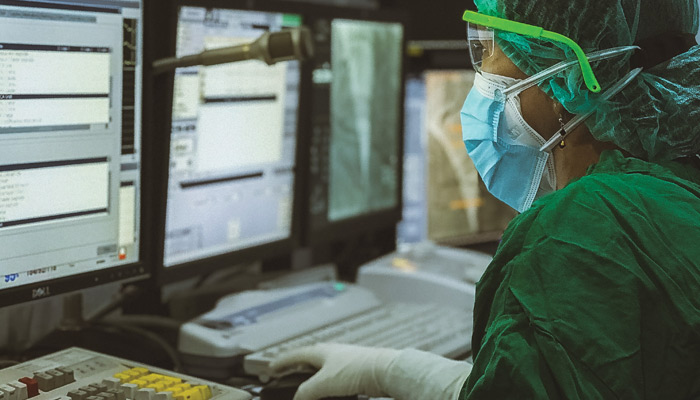
Is There a Doctor in the House?
Startups in medical devices and therapeutics know how important it is to involve doctors in the innovation and development process.
By Michael Schmanske
[ORIGINALLY APPEARED IN MDNEXT Q4-2022]
“The problem I have with digital healthcare is that most of the applications are not healthcare, they are websites.”
~AngelMD Impact Conference Digital Roundtable
That got a chuckle from the audience and the rest of the panel, but also highlighted an issue plaguing digital health startups. Most digital health platforms are not much more than a matching engine and/or a teleconferencing platform that meets regulatory requirements. Those are the successful ones. Other product developers in operations or workflow support are frustrated because they fail to make traction critical to overcome critical mass and adoption hurdles.
To a man with a hammer all the world is a nail. And for twenty years digital developers have been fed a steady diet of blitzscaling, moving fast and breaking things and most of all being “disruptors.” They did not necessarily need experts in the development process; in some cases the fresh view of the non-expert was actually an asset. That will NOT work in medicine.
Healthcare has gatekeeping stakeholders throughout: patients, doctors, medical practices, hospital systems, policy payers (like employers) and servicepoint payers (government, insurers, etc). All have vastly different priorities and adoption models. Sometimes those interests are at odds with one another and successful solutions must be aware of the rocky waters they are navigating. The good news is that entrepreneurs have multiple touch points that may be addressed. But elegant solutions in search of problems will be ignored unless you include the target audience from the beginning.
One audience has the institutional knowledge and the practical operational experience to provide feedback to startups at all levels of adoption. Doctors are familiar with the players and those that own their own practices control the purse strings as well.
Digital entrepreneurs in other industries operate in “stealth mode” then release their products into the market and hope for mass adoption. Strategically there is great sense in that. Unlike other life science innovations, the nature of digital technology solutions means low barriers to entry, minimal IP protections and an emphasis on traction or sector expertise. In retail and commercial use cases this makes good sense. The developers likely have some understanding of the economic environment in which they are working.
Medical solutions need more. Startups in medical devices and therapeutics know how important it is to involve doctors in the innovation and development process. Board members and scientific advisors are drawn from the science and medical professions most relevant to the use case or scientific specialty the company is addressing. But newsflash to developers: Unless you are a healthcare professional yourself with deep knowledge of each aspect of the value and adoption chain, you need to engage that expert knowledge during development. Shrewd advice, but how does an entrepreneur implement it?
MindTrace is a funky example of the classic development model inverted. By working with facilities and practitioners in brain surgery, they gained immediate traction and feedback for their surgical planning products. They are still finalizing their Minimum Viable Product (MVP) yet multiple surgical practices have already begun adopting their technology. Other than redefining the definition of an MVP, this also highlights how valuable that early engagement can be. By the time they finalize a digital solution for the market they will already have an installed user base among the key opinion leaders in neurology.
Their example is extreme but it includes some important insights that can be generalized:
Engage the experts early. Get the NDA’s signed or whatever you need but you should have a couple reliable guides when you are still at the pre-development phase. Don’t travel blindly down a dead end path.
Make sure that the solution for one set of stakeholders does not cause pain for any others. True innovation should be a win-win scenario, otherwise you will have a fight on your hands.
Most importantly, is this a problem the stakeholders want you to solve? Think about your innovation from the point of view of each stakeholder. Even better, go ask! Visit the actual facilities and spend time shadowing the professionals.
If you need help arranging a “take your developer to work day,” that is a good indication that you need to expand your advisor base. That is their purpose. The good news is that the AngelMD Expert Network is here to
help.
Michael Schmanske is a 24-year Wall Street veteran with experience on trading desks and asset managers. He is the co-founder of Prognosis:Innovation as well as founder of MD.Capital.





